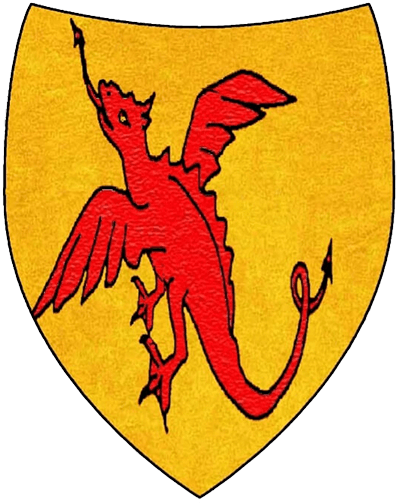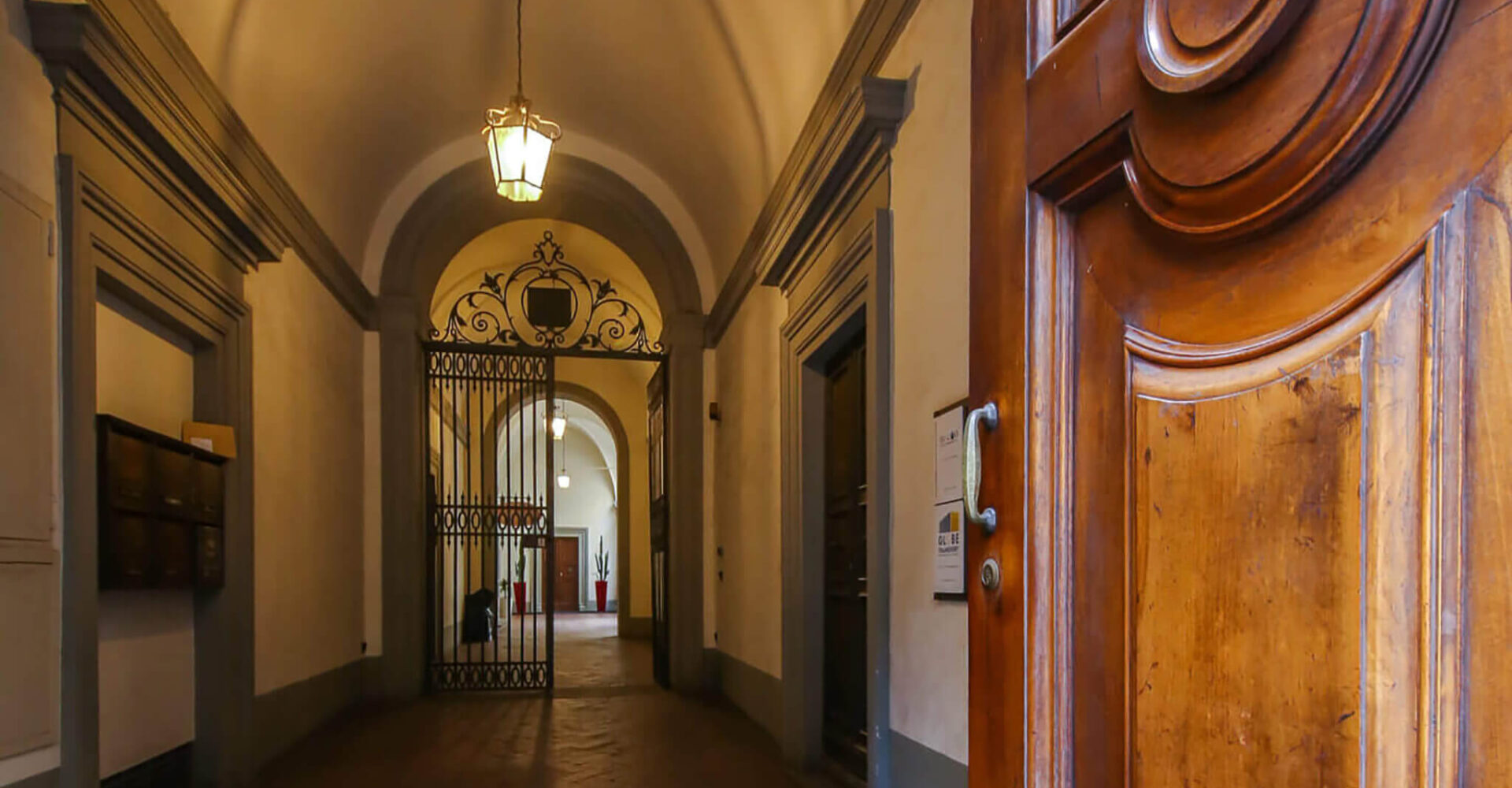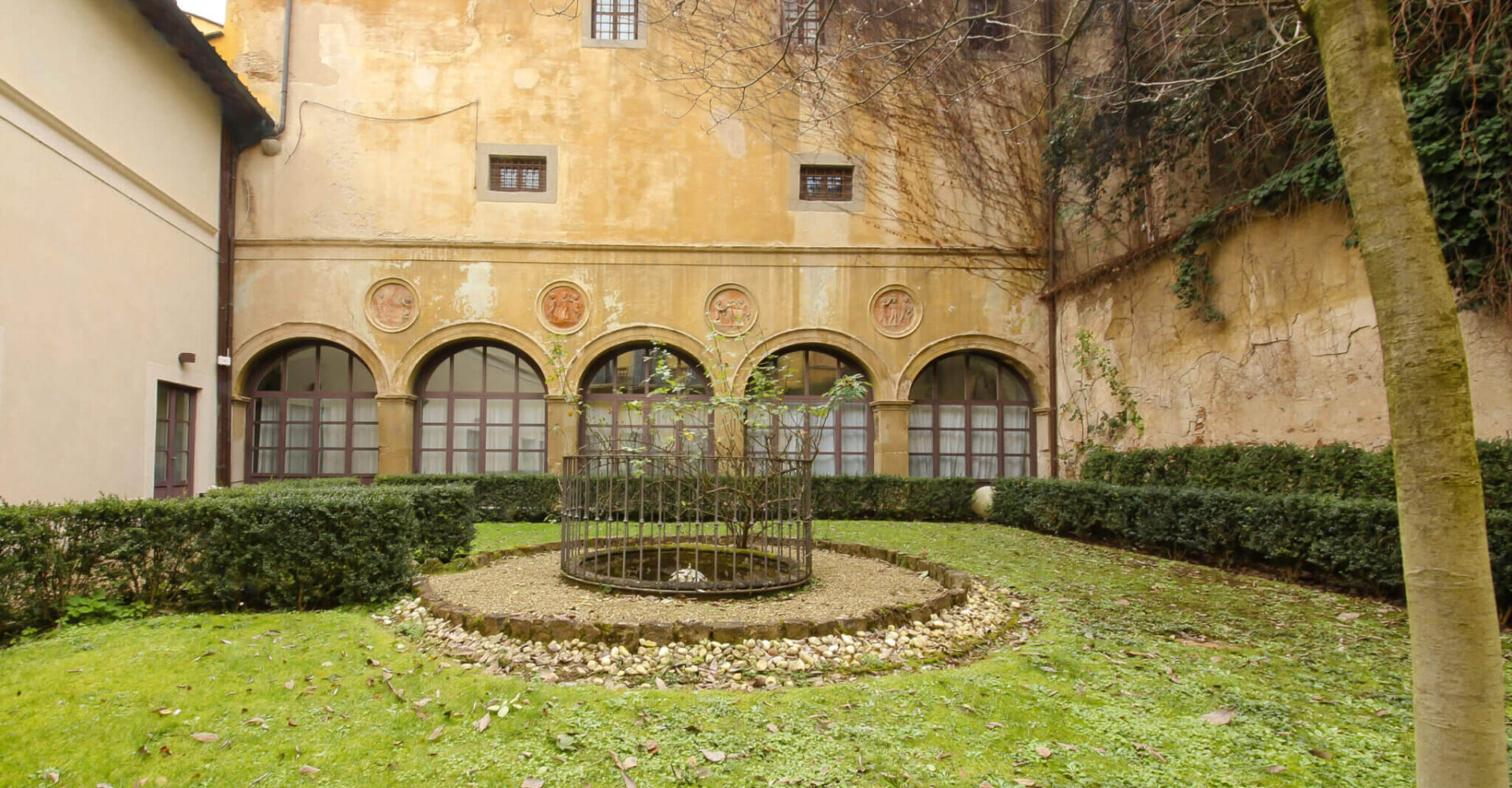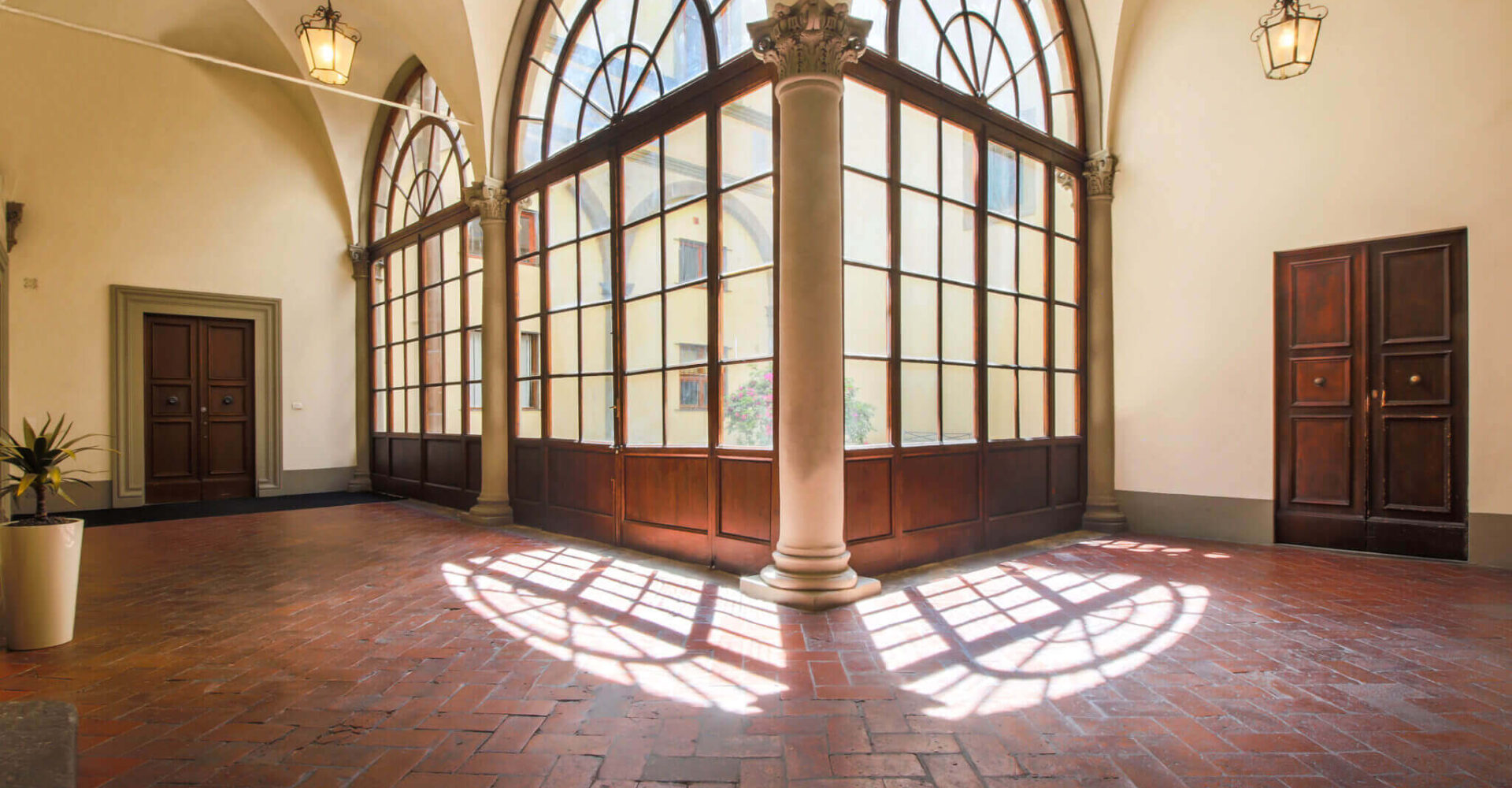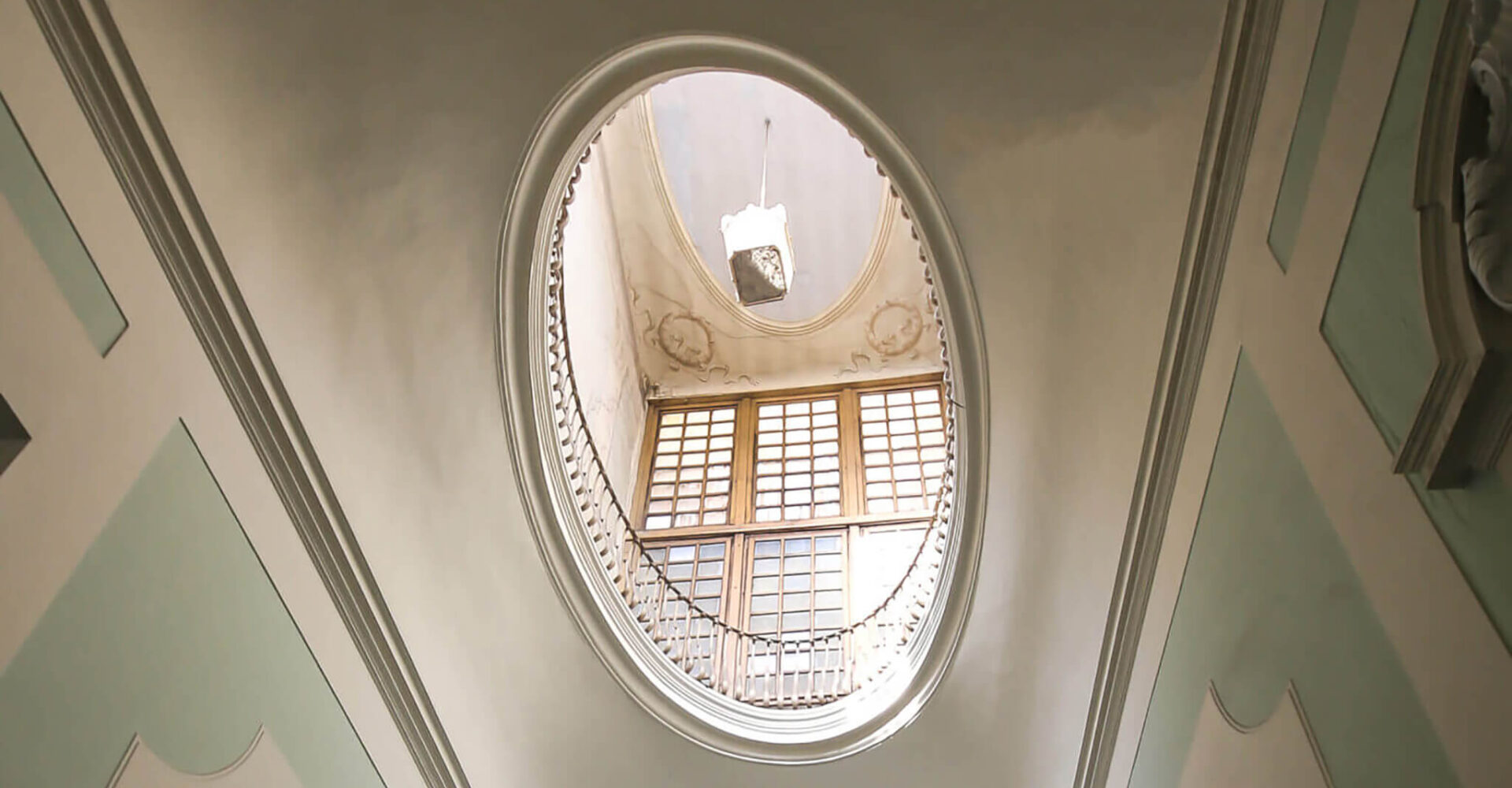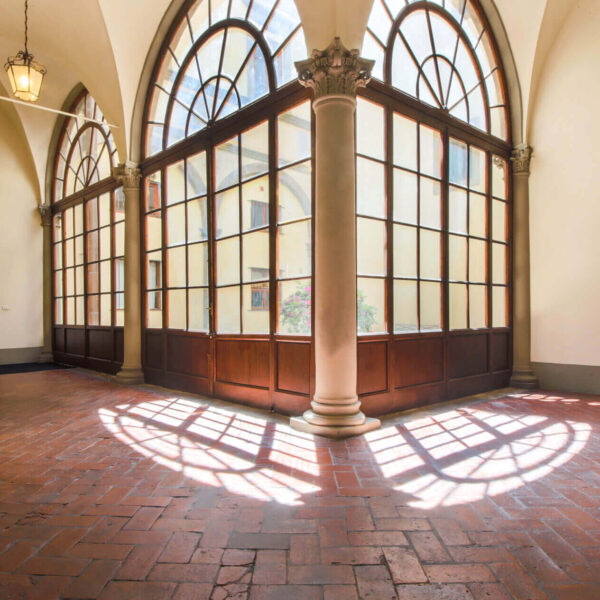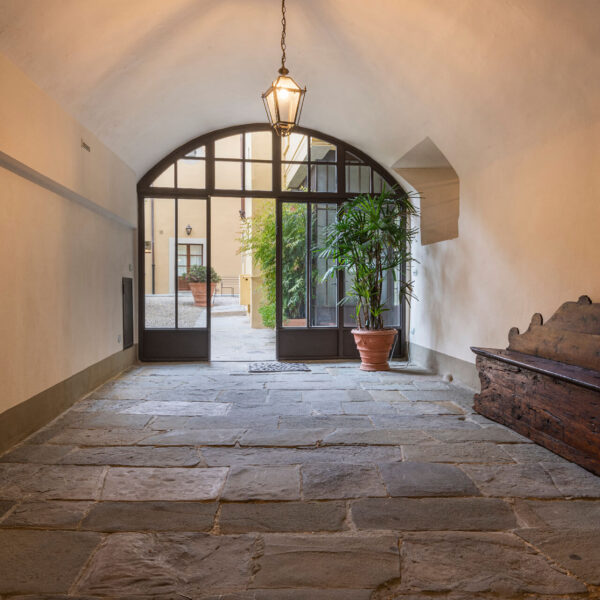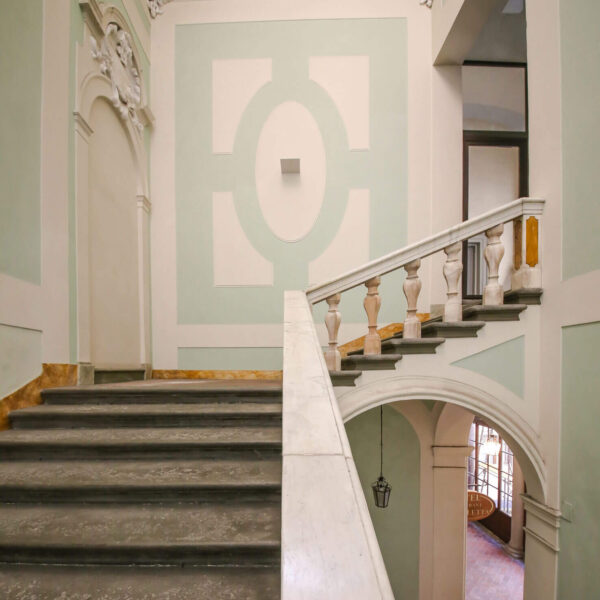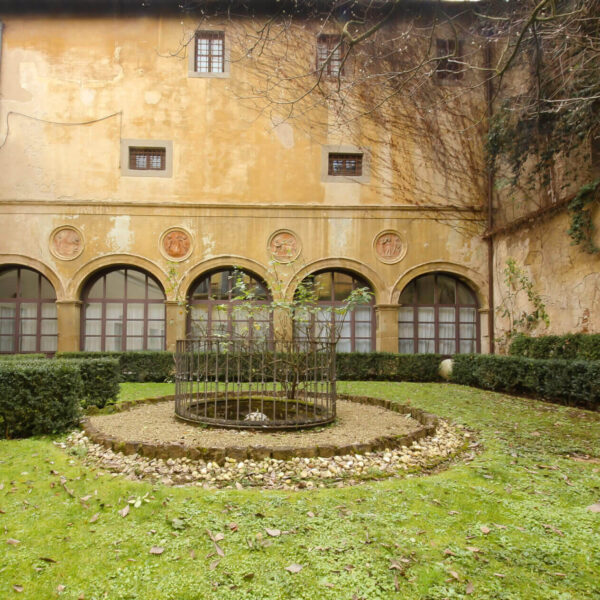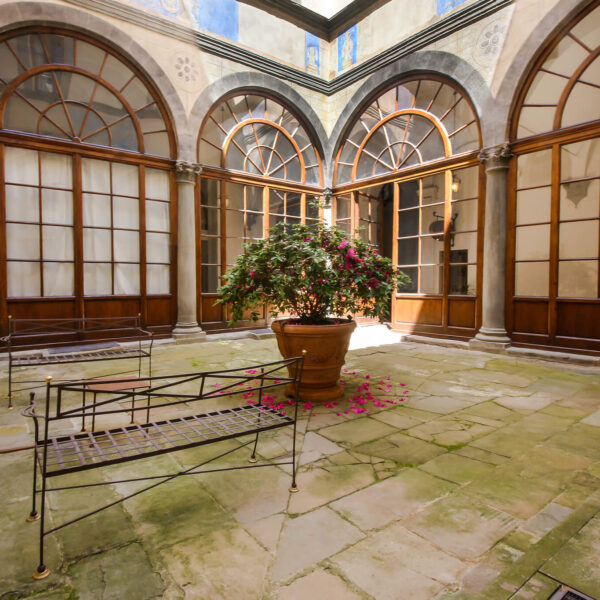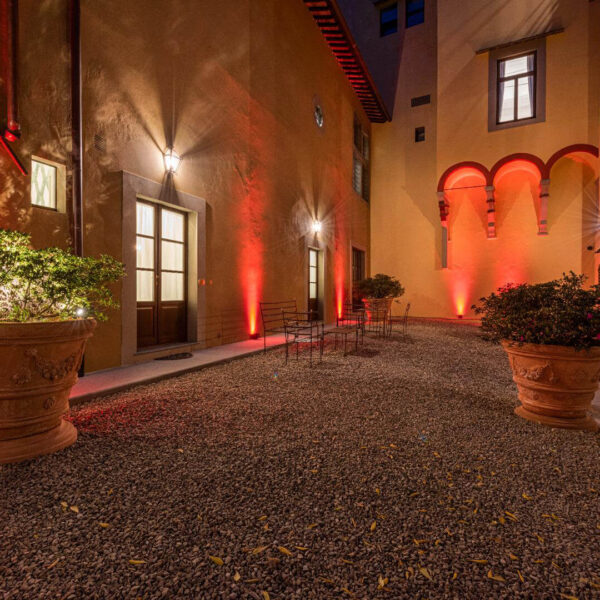Events at Palazzo Dragomanni
It is possible to organize events in the garden, lemon house, and other spaces, taking advantage of the beauty and elegance of the palace. The property reserves the right to consider any type of event: ceremonies, corporate events, fashion shows, or others. Outdoor events are particularly recommended given the large garden framed by the Corridoio Vasariano! For indoor events, the old lemon house, which has been completely restored, or tent structures, including transparent ones to continue admiring plants, flowers, and art at all times, can be used. Events are never organized when the two apartments are occupied.
Features of the location and services available upon request:
Visit the palace
It is possible to visit the courtyard of the Palace, restored in 2020, in which after a long restoration work in collaboration with the superintendence, seventeenth-century frescoes that were no longer visible were found. It is also possible to visit the grand staircase, also restored a few years ago. Other wings of the Palace can be visited only exceptionally.
The visits are free of charge.
Palazzo Dragomanni is one of the few palaces still standing in via de’ Guicciardini after the destruction of the Second World War, together with Palazzo Guicciardini with which it borders towards Palazzo Pitti. It seems that at the end of the war the two palaces were not destroyed for fear that their collapse could have damaged the Vasari Corridor that passes very close to them, thus allowing us to admire them even today.
Palazzo Dragomanni is located on the route that the Medici once traveled several times a day to go from Palazzo Vecchio to Palazzo Pitti. To cover this route the Medici used the Vasari Corridor, which starting from the Uffizi crosses Ponte Vecchio and then remains on the left side of via de’ Guicciardini and crosses the two gardens of Palazzo Dragomanni; the Corridor then continues towards Palazzo Guicciardini to end at Palazzo Pitti.
Palazzo Dragomanni is located halfway along via de’ Guicciardini, between Ponte Vecchio and Palazzo Pitti.
The Palace, more precisely the “Salvatori ex Dragomanni” complex, dates back to the sixteenth century, as shown by the facade on Via de’ Guicciardini, the facade on the back overlooking the second garden, the internal cloister with the colonnade and other elements inside the Palace and in the second garden.
In a later period, at the end of the seventeenth century, the Palace was restored and enlarged by the architect Antonio Ferri (1651-1716) “in this time of the month of September 1698 the palace of Mr. Filippo di Giuliano Franceschi, a Florentine gentleman, located in Via de’ Guicciardini, restored and enlarged by him, was seen finished from the outside” (see Antiquario Fiorentino n. 2118, Florence 1765).
Of this intervention, the main staircase remains and probably some frescoes in the monumental apartment on the first floor as well as other frescoes in the halls on the ground floor.
In addition to the grand staircase, of particular interest and value, it is worth highlighting the frescoes in the hall overlooking Via de’ Guicciardini in the monumental apartment on the first floor and the chapel, also completely frescoed; also of particular interest are the frescoes depicting the myth of Diana located in one of the rear halls on the ground floor.
Subsequently, the Palace underwent a series of internal alterations which in any case did not significantly distort or alter its overall appearance.
The “Salvadori ex Dragomanni” complex was mentioned because, in addition to the main body consisting of the Palace itself, there are two distinct gardens at the back crossed by the Vasari Corridor and the rooms below it that are part of the Palace.
The two gardens:
The first is accessed through the driveway at Via de’ Guicciardini n°11.
The second is accessed through the entrance at number 13 or through an internal passage from the first garden; probably, in a previous era, it could also be accessed from French windows in the frescoed halls on the ground floor. This garden borders the garden of Palazzo Guicciardini.
On the side of the two gardens opposite the Palace we have a series of rooms adjacent to each other in the shape of a corridor that wind up to the border with Palazzo Guicciardini: these rooms form the basis of the well-known Vasari Corridor above; Among them, the last ones are worth highlighting, located in the second garden, with arches and rose windows on the façade, whose architectural details inside, niches and naturalistic decorations on the ceilings, are particularly elegant.
In some of these rooms located under the Vasari Corridor, two apartments have been created overlooking the first garden of the building. These apartments, called Apartment One and Apartment Two, are the only ones that can use the garden.
Little is known about the Dragomanni, who were probably the first owners of the Palace: this theory is supported by the fact that the only coat of arms that systematically returns, both in the frescoes of the hall on Via de’ Guicciardini and in other decorations in the remaining monumental apartment, represents the red rampant dragon on a gold field shown in these pages.
The Dragomanni probably derive from a German baron named Rodolfo who came to Italy in 963. In any case, it is documented that this feudal family already owned the castles of Montecchio-Vespone, Policiano and Vitiano in the Castiglione Aretino district, near Arezzo (from 1384 called Castiglione Fiorentino) in 1040. They had always been part of the Arezzo patriciate, expressing numerous Priors and Gonfalonieri. Its founder is considered to be a Messer Bonetto, living in the 11th century. They had a knight of Santiago and, in addition to Rodolfo, also a count Alemanno, protonotary apostolic and commensal of Clement VIII, knight of Santo Stefano. Gioia di Matteo commanded the militia of Florence and another Gioia was bishop of Monte Peloso and then of Pienza. The Dragomanni became related to the highest Tuscan nobility. Eugenio Gamurrini dwells at length on this family (Istoria genealogica delle famiglie nobili toscane, et Umbre, vol. V, pp. 236-245, Florence, Navesi, 1671) which he defines as among the most conspicuous in Tuscany. In addition to the Palazzo Dragomanni in via de’ Guicciardini in Florence, they owned numerous residences of which still remain today the Palazzo Dragomanni in Castiglione Fiorentino or the splendid Gothic Dragomanni chapel in the church of San Domenico in Arezzo which was also illustrated by Vasari. The family died out in the 18th century in the Beroardi family, another ancient Arezzo family.
